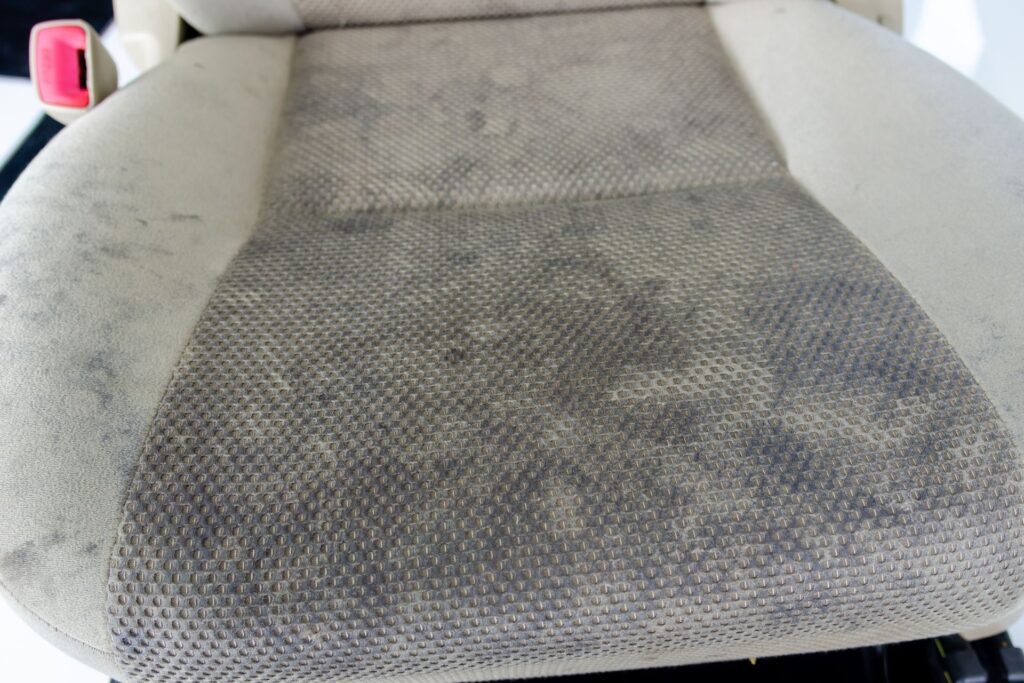Like clothing, upholstery is subject to daily abuse from skin oils, hair, dirt, food crumbs, and spills. Save hundreds of dollars if your sofas and chairs are looking worse than they used to be. Banishing dirt, stains, even discoloration yourself can cost mere pennies.
Before you start reading this guide about how to clean upholstery, make sure you understand what it is you are dealing with. A code should be on the label.
- W = Water-Based
- S = Solvent Based
- WS = Water, or Solvent
- X = Professional Cleaning Requirements
Next, follow the instructions and use these cleaning tips (be sure to test it on an inconspicuous spot first).
Your furniture will last longer if you perform regular upholstery maintenance as part of your home maintenance routine.
How to Remove Dirt From Upholstery
Use the upholstery attachment to give the piece thorough vacuuming. You should start at the top and work your way downwards using short left-to-right strokes. It is important to work in the same direction, especially with fabrics with a nap like suede, chenille, and corduroy. To clean seams and folds better, switch to the crevice attachment. To remove dirt and dust from all corners, you can use compressed air (just like when cleaning your computer keyboard).

Fabrics with a W code or WS code…
- Mix a few drops of liquid dish detergent into a bucket of warm water.
- Use a soft-bristled brush to gently brush the entire area with a soap solution. Avoid soaking any areas as excessive moisture can cause fabric discoloration.
- Next, wipe the entire area with a damp, clean cloth.
- Before you place the piece on it, let it air dry completely. Do not try to speed up the process with a hairdryer as heat can cause fabrics to shrink and pucker. However, you can turn on fans to increase air circulation. Let the cushions dry on one side, then clean the other.
Fabrics with an S-code…
Only use solvent-based cleaners, such as dry-cleaning solvents. Water-based cleaners can cause damage to these fabrics. You can buy dry cleaning solvent online by typing “upholstery-safe dry cleaning solvent” into your search engine. Or, you might find it in dry cleaning kits such as DRYEL at big-box discount stores or online retailers.
Your work area should be well ventilated. Use a towel to gently clean upholstery. With a soft-bristled, clean brush, you can get solvent into deeply stained areas. Let the piece dry completely before you place it back on.
How to Clean Upholstery Stains
You can minimize the chance of stains from wine, sauces, or greasy foods if you act quickly. Blot immediately with a clean, dry cloth.
Use a spot cleaner, dry cleaning solvent, or fabric protector to remove any marks or stains. Wet a sponge or cloth and soak it in water. Next, gently rub the stain with a clean cloth or sponge. Next, use a sponge or clean cloth to blot the stain. Continue to do this until the spot is dry.
If the spot doesn’t come out after three or four attempts, it’s time for a professional.

How to Handle Discolouration
Natural fabrics can brown when they are too wet or dried too slowly. Use a neutral pH-based and fast-drying upholstery shampoo to counteract this.
- Vacuum all furniture thoroughly.
- Follow the manufacturer’s instructions to mix the cleaning product into a bucket of water. Tip: To whip the foam, use an electric mixer or a handheld egg beater. The shampoo can be applied when there is very little water in the bottom.
- Towels that are clean and absorbent can be folded, dipped in the foam, and rubbed to dry.
- You can wipe the entire fabric with overlapping strokes either vertically, horizontally, or both. Just make sure you only go in one direction.
- As needed, add more foam to your towel.
- Allow the foam to rest for five minutes, but not more than ten.
- Use a towel to remove the foam.
- Rinse the towel and wring it out as necessary. Open the windows to dry the towel quickly. Fans can be used to circulate the air in the room. You should not use heat or a hairdryer in the area. Overall, the fabric must dry at the same speed.
Tips for Upholstery Cleaning
- To ensure that colors don’t fade or bleed, make sure you test any of these techniques first.
- Avoid getting water or cleaning products on metal or wood parts of furniture. This could cause rust, corrosion, or discoloration.
- These techniques can be applied to natural and synthetic woven fabrics. Learn more about cleaning leather.
- Call a professional to clean upholstery that has an X code. These services can be provided at your home. A professional cleaner should give you an estimate based on the size and type of fabric you have.

